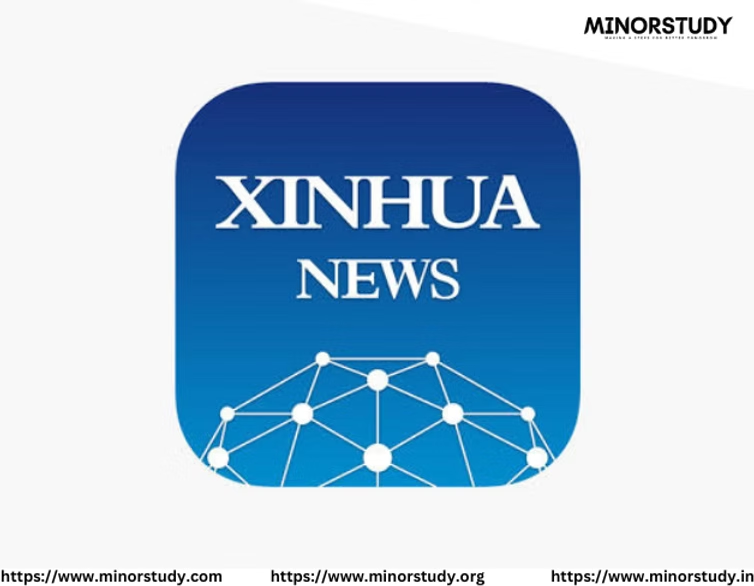📰 Xinhua News Agency: 10 Essential but Controversial Insights About China’s Media Giant
Xinhua News Agency isn’t just a news organization—it’s a ministry-level, global state media powerhouse with profound influence and complex implications for media, politics, and daily life. In this comprehensive, human-friendly article, we’ll dive deep into its history, key facts, timeline, significance, controversies, FAQs, personal impacts, and conclude with reflections on its role in society. Ready for an informed journey?
📜 History of Xinhua News Agency
Established in 1931
Originally founded as the Red China News Agency within the Jiangxi Soviet, the organization became known as Xinhua in January 1937, aligning with the Long March years pbs.org+15en.wikipedia.org+15sk.sagepub.com+15.Post-1949 evolution
After the People’s Republic of China was founded in 1949, Xinhua became the official, sole national news agency, integrated under the State Council and closely tied to the CCP .Digital transformation and global expansion
The launch of Xinhuanet in 1997, and the creation of CNC World in 2010, propelled Xinhua into the digital and international media landscape sandpipercomms.com+2academia.edu+2mediabiasfactcheck.com+2en.wikipedia.org+2en.wikipedia.org+2simple.wikipedia.org+2.
📊 10 Key Facts About Xinhua News Agency
State-Owned and Ministry-Level
As a direct expression of the CCP’s communication strategy, Xinhua answers to top government authorities byteplus.com+15en.wikipedia.org+15althistory.fandom.com+15.Massive Workforce
With around 10,000 journalists and bureaus in 170 countries, Xinhua is among the globe’s largest news agencies afp.com+2simple.wikipedia.org+2sandpipercomms.com+2.Multilingual Reach
Xinhua publishes in over 10 languages, offering multimedia content across digital, broadcast, print, and social media platforms simple.wikipedia.org.Digital Media Infrastructure
Xinhuanet, established in 1997, now hosts numerous national channels—covering topics from politics to tech—under Xinhua’s umbrella althistory.fandom.commediabiasfactcheck.com+2en.wikipedia.org+2project2049.net+2.AI-Powered Anchors
In 2018, Xinhua introduced the Sogou AI News Anchor, a pioneering avatar delivering news in both English and Chinese en.wikipedia.org+1en.wikipedia.org+1.Global Broadcast Presence
CNC World began broadcasting in January 2010, reaching audiences across Asia, Europe, North America, and beyond en.wikipedia.org+5en.wikipedia.org+5pbs.org+5.Times Square Footprint
Xinhua secured prime billboard space in Manhattan, symbolizing China’s media presence in Western heartlands academia.edu+1simple.wikipedia.org+1.Criticism and Bias
Accused of disseminating state propaganda, failing transparency checks, and promoting CCP narratives—especially regarding internal politics and foreign policy en.wikipedia.org+2mediabiasfactcheck.com+2simple.wikipedia.org+2.Foreign Influence Accusations
Critics like the USCC argue Xinhua functions partly as a propaganda arm and intelligence gatherer mediabiasfactcheck.comproject2049.net.Censorship Enforcer
Xinhua both produces content and regulates foreign media flows within China, enabling government control over information pbs.org+15academia.edu+15project2049.net+15.
📅 Timeline Xinhua News Agency
1931 – Founded as Red China News Agency.
1937 – Renamed Xinhua.
1949 – Becomes official PRC news organ.
1997 – Launched Xinhuanet portal.
2009/10 – Inaugurated CNC World TV.
2018 – Debut of AI news anchor.
2020 – U.S. labels Xinhua “foreign mission.”
2025 – Continues global expansion amid scrutiny.
💡 Frequently Asked Questions (FAQs)
Q1: Who owns Xinhua?
A: The People’s Republic of China via the State Council—it’s government-funded and party-aligned asiasociety.org+12en.wikipedia.org+12byteplus.com+12pbs.orgen.wikipedia.org+1news.xinhuanet.com+1simple.wikipedia.org+1en.wikipedia.org+1en.wikipedia.org.
Q2: What’s its editorial stance?
A: Pro-CCP, often “left-biased,” prioritizing state messaging while avoiding criticism of party leaders .
Q3: Does it operate outside China?
A: Yes—over 170 bureaus worldwide, with global multimedia reach via CNC World and Xinhuanet en.wikipedia.org+1simple.wikipedia.org+1.
Q4: Is Xinhua credible?
A: Mixed opinions—widely used, but flagged for propaganda, censorship, and limited transparency by observers .
Q5: How is the launch of AI anchors significant?
A: Represents a novel, cost-effective way to present news using synthesized digital avatars—controversial but audacious .
🌍 Significance for Media, Politics & Society
A Pillar of China’s Soft Power
Through global storytelling and multimedia strategies, Xinhua builds narratives aligned with China’s worldview .Contrast to Free Press Models
Its structure exemplifies how authoritarian regimes use media as an extension of political control.Impact on International Journalism
Xinhua’s presence pressures global outlets to adapt, compete, or confront state-backed messaging academia.edu+1pbs.org+1.Tech Innovation in News
Pushing AI anchors challenges journalistic norms and accelerates AI deployment in media .Shaping Public Opinion
Domestically, Xinhua sets or reinforces public narratives; internationally, its framing influences audience perceptions of China—especially in developing nations.
🧠 Daily-Life and Societal Impacts
In China:
It’s the primary source of national news—shaping how citizens understand government policies, crises, and global events.Globally:
Content from Xinhua appears on partner platforms, influencing narratives even in foreign media ecologies.Journalistic Influence:
Smaller outlets may echo Xinhua, making critical media literacy essential for audiences everywhere.Tech Rollouts:
Use of AI anchors may reduce human roles, altering the newsroom landscape worldwide.
🎯 Important Observations & Issues
Transparency Concerns:
Xinhua lacks independent verification mechanisms and is often critiqued for pro-CCP bias .Propaganda vs. Reporting:
Institutional critics label parts of Xinhua’s global output as propaganda cloaked in news .Strategic Expansion:
Through CNC World and international deals, Xinhua deepens China’s media influence abroad .Surveillance Role:
Analysts suggest Xinhua collects globally relevant data for CCP leaders pbs.org+15project2049.net+15althistory.fandom.com+15.AI and Future Media:
The AI anchor serves as a testing ground for scalable, uniform messaging.
🎉 Wishing Message
“Here’s to continued innovations and discussions sparked by Xinhua—may global media grow ever more diverse, transparent, and resilient!”
📝 Conclusion: Xinhua News Agency
Xinhua News Agency is a colossus of modern media—deeply woven into the fabric of China’s state apparatus, yet impossible to ignore on the global stage. Its vast reach and technological strides, especially in AI and multilingual broadcasting, are undeniably impressive. But these strengths come hand in hand with legitimate concerns about propaganda, censorship, and state control.
In a world where information shapes perception, Xinhua reminds us: not all news is created equal. For global readers and media practitioners, understanding Xinhua’s motives, operations, and messaging is key to nurturing critical media literacy and safeguarding a pluralistic information environment.








